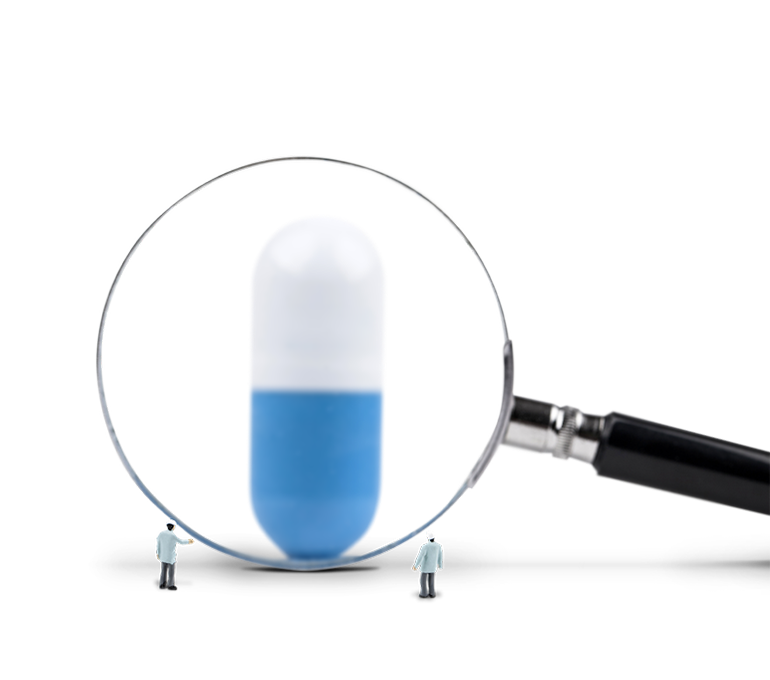
Selecting 'I am a UK healthcare professional' will take you to the Accord UK Partner Platform.
Selecting ‘I am a member of the general public’ will take you to the Accord UK site.


At the end of this course you should:


In the UK, pharmacies and dispensaries refer to the Drug Tariff. The Drug Tariff outlines what will be paid to pharmacy contractors for NHS services provided either for reimbursement or for remuneration. It is a publication supplied on a monthly basis, primarily to pharmacists and GP practices.1
It also includes:
The Drug Tariff price of a generic medicine is determined by the category of the product. Part VIIIA lists the basic prices for generic drugs and is further divided into categories, of which Category M is one.2
The main categories of products that determine the Drug Tariff price (or the reimbursement price) of a generic medicine, are:2
Occasionally, medicines change category. For example, when a generic product launches following the expiry of a branded product patent it could appear in Category A but after a period of time, when more suppliers launch and the market pricing decreases, it may move across into Category M.
It is important to understand how Category M works, as it contributes a significant part of income in a Pharmacy and Dispensary, especially in England and Wales. It also applies to Northern Ireland, but Scotland have a separate drug tariff, which will be covered later in this training.3
There are ways of monitoring the changes to reimbursement, using them to protect or boost profitability before they come into effect.
The Drug Tariff arrangements are different in Scotland from elsewhere in the UK.6
Category M is not applicable to Scotland, instead Part 7 – ‘Drugs & Preparations with tariff prices’ is broadly the Scottish equivalent of this mechanism.
Part 7 includes the following sections:3
From time-to-time, due to lots of factors, supply issues can arise for Part 7 medicines whereby they are unavailable at the drug tariff, in these cases a price adjustment may be agreed, meaning the drug tariff price of the item will be changed.
These adjusted prices can be accessed here:
https://members.cps.scot/adjusted-prices/8
The community pharmacy sector will receive £3.073bn in core Community Pharmacy Contractual Framework (CPCF) funding in 2025/26. Of this annual figure, £900m is to be delivered as retained buying margin i.e. the profit pharmacies can earn on dispensing drugs through cost effective purchasing. This total retained margin figure is based on an agreement between the DHSC and CPE.4
Category M medicines set the reimbursement price and ensure that pharmacists receive the total annual margin of £900 million across all generic products dispensed.4
This also applies to Dispensing Doctors.
Data is gathered from pharmacies on a monthly basis so that the DH can see how reimbursement is tracking against this target.
If, across the Category M range, reimbursement is tracking above the retained margin figure, tariff prices will be reduced in Category M in future quarters in order to recoup that overpayment.
If total reimbursement is below the target margin figure, prices in Category M would increase so that pharmacies could increase the return on their generic purchasing.
This means the profit that pharmacies can earn through dispensing these generic medicines is reviewed and adjusted to maintain a balance of £900m retained margin for Pharmacy.4
The reimbursement price set by the DHSC is calculated using data provided by generic manufacturers and wholesalers, who provide the information under two voluntary schemes that are designed to assist the DHSC in gathering information to support the quarterly revision of Category M prices.4
The reimbursement price of Category M medicines is determined by the level of a specific molecule, strength, presentation, and pack size.
To arrive at the reimbursement price, the DHSC elevates the average actual selling price at a granular product level.
This increase can be in the region of 100%, therefore the Drug Tariff price can be around double the actual selling price obtained by the generic manufacturer
Stylised example of the various components of the Drug Tariff price. The figures in the diagram do not correspond to any particular product but are indicative of a generic product in Category M.
The difference between the price paid for a medicine and the tariff price for that medicine is retained profit.
This is shown here as ‘pharmacy margin’.
How often are changes made to the Category M tariff?
Category M tariff prices are issued quarterly and reimbursements are calculated on a quarterly basis9 against the retained margin figure. However, there are sometimes out of schedule updates to readjust the retained margin.
The Category M tariff updates are typically released 3 working days before the end of each quarter, for example the end of March, June, September and December.
They can be accessed here:
https://www.nhsbsa.nhs.uk/pharmacies-gp-practices-and-appliance-contractors/drug-tariff/drug-tariff-part-viii
Top tip – save this link on your computer browser to review the changes each quarter
How often are changes made to the Category A and C tariff?
The tariff for these products is published monthly, prior to the start of the month in question.
They are located in Part VIIIA of the drug tariff and can be accessed here:
https://www.nhsbsa.nhs.uk/pharmacies-gp-practices-and-appliance-contractors/drug-tariff/drug-tariff-part-viii
Top tip – save this link on your computer browser to review the changes each month
There are situations where dispensing at a loss can occur in times of shortages of a medicine10 i.e. where purchase price is higher than reimbursement price.
For example, if there are manufacturing problems or a change in demand, resulting in pharmacy contractors having to dispense an equivalent product that is only available above the set Drug Tariff price.
Sometimes, if medicines cannot be purchased by pharmacies at, or under, the Drug Tariff price, the DHSC sets a higher concessionary reimbursement price for that month to reflect the current market pricing.11 These are called ‘Price Concessions’ and they work as a temporary tariff that is aimed to help avoid dispensing at a loss when supply is short.
There are no additional endorsements required for price concessions, but the concessionary price only applies to the month in which is it granted.11 It is possible that a new concession will be granted by the DHSC for subsequent months; however, these are subject to application and are not guaranteed.
In this scenario, if you dispensed the product in the month that the price concession is granted for then you would be reimbursed £2.50, rather than the usual drug tariff price.
The list of products is updated monthly and can be found at https://cpe.org.uk/funding-and-reimbursement/reimbursement/price-concessions/
Top tip – save this link on your computer browser to review the changes each month
Category M Tariff
Scottish Tariff Adjusted Prices
https://members.cps.scot/adjusted-prices/
Price Concessions
https://cpe.org.uk/funding-and-reimbursement/reimbursement/price-concessions/
Category M Calculator
https://www.accordpartnerplatform.co.uk/cat-m-reimbursement/
For a practical guide on using your learnings from the Category M course, download the below PDF.
Download PDFIt includes popular generics, which are widely available. The price is based on a weighted average of the List Prices from 2 wholesalers and 2 generic manufacturers.
Items in this category are based on a particular brand or manufacturer.
This section of the Tariff provides information on the payments for Essential Services.
It includes drugs that are readily available, where the Department of Health and Social Care calculates the reimbursement price based on information submitted by manufacturers.
2004
2005
2006
2007
Part 7B
Part 7S
Part 7U
Part 7W
Less than 300
Over 600
Around 900
Nearly 1200
£30.73 million
£307 million
£3.073 billion
£307 billion
£800 million
£900 million
£1 billion
£1.2 billion
Weekly
Monthly
Quarterly
Annually
Price concessions
Price exceptions
Price endorsements
Concession products
Please note that:
1. Upon submission of an order form for products through the Accord Partner Platform (an “Order”) you may be contacted by an Accord-UK Ltd. sales representative to confirm your details and to discuss your Order in more detail.
2. No Order (or part thereof) shall be considered as confirmed by us until you have received an email confirming that your Order (or part thereof) has been processed. Submission of an Order does not guarantee stock availability of the ordered products nor delivery of the ordered products by the chosen wholesaler.
3. Subject to the above, by submitting an Order you accept for this to be submitted by us to your chosen wholesaler on your behalf based on the confirmed Order.
4. All purchases of products under the Accord-UK Ltd. pricing Proposition (“Accord Proposition”) are subject to the Accord Proposition Terms and Conditions, available on request.
5. Products supplied by your chosen wholesaler that are purchased via the Accord Proposition will be invoiced according to your Accord Proposition pricing agreement.